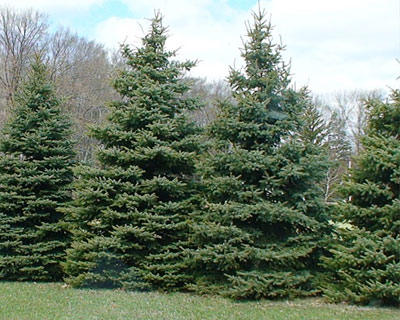Creating a windbreak with trees

I live in Rio Rancho just east of large areas of new construction (i.e. bulldozed bare dirt). When the wind blows, as it has been doing with a vengeance recently, the sky is filled with fine blowsand. The wind is damaging enough; who wants the added injury of sand dumped all over everything?
Last week I gained almost two inches of the stuff in my newly planted vegetable garden. Needless to say it didn’t help the spinach sprouts! Eventually, the new subdivisions will be covered with the preferred urban coverings of paving, sod lawn, or gravel, but it will take a good long time especially as growth to the west looks like it will continue ad infinitum.
While we can’t stop the wind or blowing dust we can manipulate our environment to modify the effects. It pays to observe what the wind does and how windbreaks are most effective so that you can create a microclimate that the wind doesn’t affect as badly. The farmlands are a good example of conservation belts where tree rows were planted to conserve soils and crops.
Evergreens are the most effective at absorbing wind energy so that it doesn’t slam into your more sensitive plants and furnishings. It is best to plant them closely enough together to “capture” the aerial onslaught. As this can be less than attractive you might achieve the same idea through staggering the trees and shrubs. Once you have slowed the wind by absorbing much of the energy you will find the sand drops out of it there. That would suggest you consider placing that screen back from the areas you want to protect from the dust.
Realize also that the proper screen will get fairly tall and will create different angles of shading at different times of year. A comprehensive plan would therefore place these evergreen trees in the west and northwest to block wind and shade from the hot summer afternoon sun, but not stop the winter sun from warming the house. Tall deciduous trees to the south will best do the summer shading to keep the areas cooler. Of course, how your house, other structures, and existing pavement are oriented to the elements makes it more complicated.
Yes, I meandered a bit from the subject of windbreaks and blowsand, but once you start realizing how landscape plantings can increase the livability of your home and cut energy costs in other ways it makes sense to look at the overall design to optimize the environmental effects. Consider doing some research and/or talking to a landscape designer who can help plan and install just such an environmental buffer.


